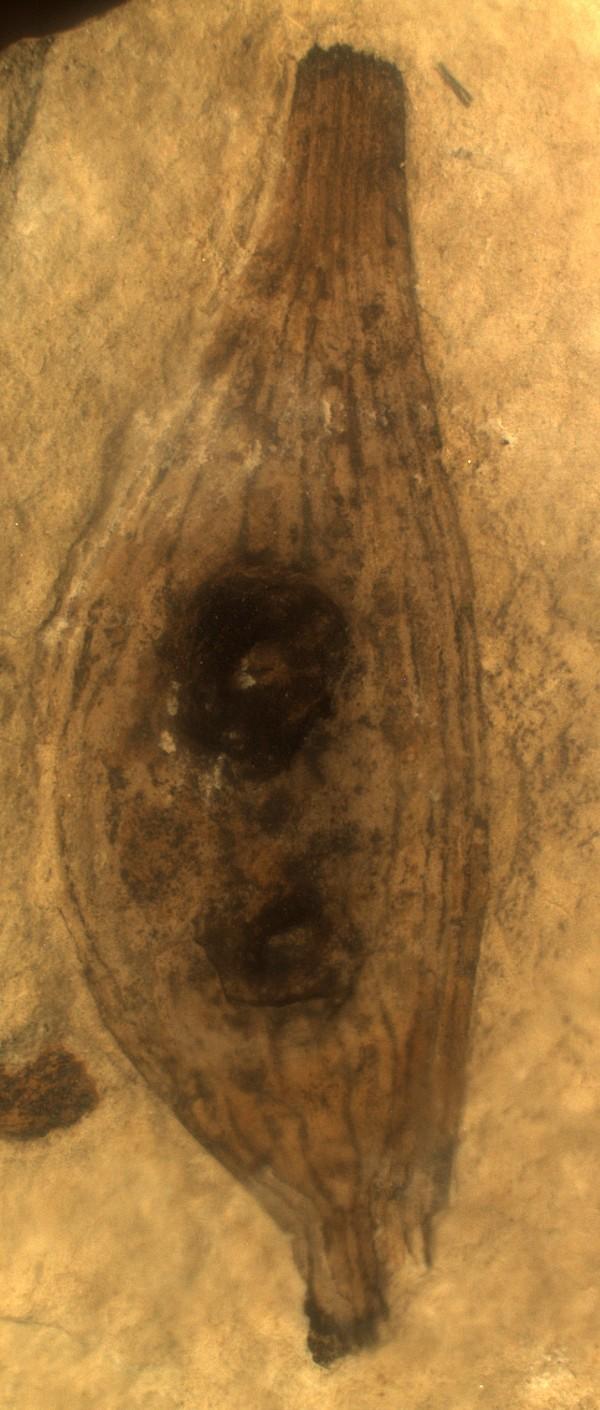Angiosperms are also called flowering plants. Due to their extreme ecological importance and close relationship to the well-being of mammals (including human being), the origin and early evolution of angiosperms have been the foci of palaeobotanical research for long time. Scientists have uncovered several early angiosperms, including Chaoyangia liangii, Archaefructus liaoningensis, A. sinensis, A. eoflora, Sinocarpus decussates, and Callianthus dilae, from the Early Cretaceous strata of the Yixian Formation of Chaoyang, Liaoning previously.
Like the preceding early angiosperms Chaoyangia liangii, Archaefructus liaoningensis, and Callianthus dilae, the new fossil Liaoningfructus ascidiatus is also uncovered from the same locality at Huangbanjigou, Beipiao, Chaoyang, Liaoning. This new fossil is preserved as a fruit, however, scientists can infer that the carpel giving rise to the fruit was ascidiate. The strata yielding these fossils are termed the Yixian Formation, of the Early Cretaceous (about 125 million years ago) in geology. The sudden-appearing co-occurrence of so many different early angiosperms in the Early Cretaceous Yixian Formation implies that the origin of angiosperms should be pre-Cretaceous.
Carpel is an evolutionary product unique of angiosperms. In the traditional doctrine, follicle-like conduplicate carpel and its marginal placentation are taken as primitive. Despite recent studies of angiosperm systematics suggest that ascidiate carpel and basal placentation should occur in the primitive early angiosperms, this point of view is still lacking fossil support. The ascidiate carpel and basal placentation of Liaoningfructus ascidiatus from the Early Cretaceous provide the first robust fossil evidence favoring this new proposal.
Paper reference: Wang Xin, Han Gang, 2011, The Earliest Ascidiate Carpel and Its Implications for Angiosperm Evolution. ACTA GEOLOGICA SINICA-ENGLISH EDITION. 85(5)998-1002

Download:
